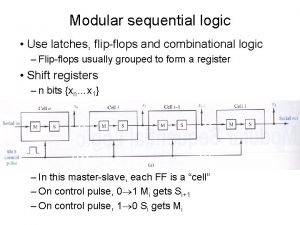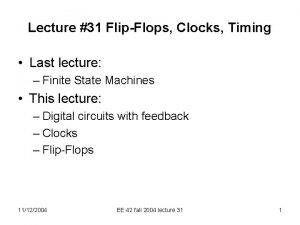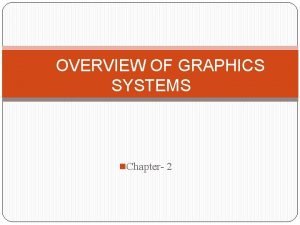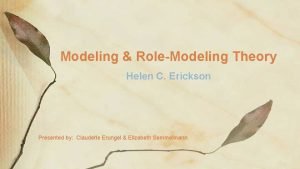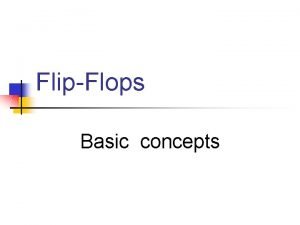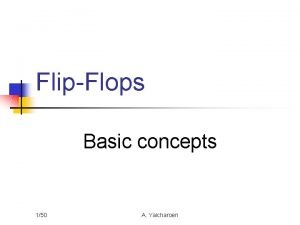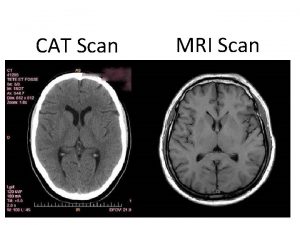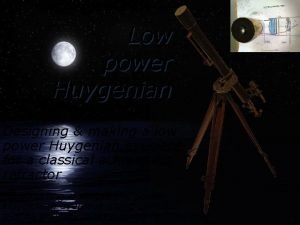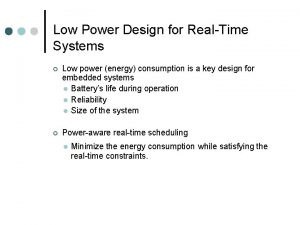Low Power Implementation of Scan FlipFlops Chris Erickson














- Slides: 14

Low Power Implementation of Scan Flip-Flops Chris Erickson Graduate Student Department of Electrical and Computer Engineering Auburn University, Auburn, AL 36849 Chris. Erickson@auburn. edu

Objectives Scan flip-flop overview Ways to incorporate low power design Benchmark circuit Results

Scan Flip-Flop Primary inputs Primary outputs Combinational logic Scan-out SO Scan enable SE Scan-in SI Scan flipflops D D SI 0 1 SO mux D’ SE DFF D’

How does is work? Primary inputs Combinational logic Primary outputs Scan-out 100 FF=0 FF=1 Scan-in 010

Low Power Scan Flip-Flop SO SI D DFF 0 D’ SI mux D mux SO DFF 1 SE SE Scan FF cell Low power scan FF cell D’

Validation of lpsff Q grounds upon entering scan-mode QS provides output to scan chain

Benchmark Circuit S 5378 – 35 Inputs – 49 Outputs Standard – 179 D-type flip-flops – 1775 Inverters – 239 Or gates – 765 Nor gates Flattened/optimized – Scan FF 967 complex gates – Low-Power Scan FF 1152 complex gates

Test Patterns Primary Input Patterns 55 h AA h Primary inputs Combinational logic Scan-out All 1 s All 0 s FF Random but constant 1 FF Random but constant 2 FF All Random Primary outputs Scan-in Always Random

Gate Transitions 55 h AAh All 1 All 0 Rand All 1 2 Rand

Gate Events 55 h AAh All 1 All 0 Rand All 1 2 Rand

Average Power Consumption (u. W) 55 h AAh All 1 All 0 Rand All 1 2 Rand

Power Reduction 55 h sff lpsff 35. 1% AA h 22. 8% All 1 22. 9% All 0 33. 0% Random 1 (const) 23. 9% Random 2 (const) 18. 8% All Random * 0% * * Only encountered if entering into scan mode and the system didn’t know to latch the input signals.

Conclusion Low Power Scan Chain can result in up to 35% power reduction. Minimal 19% area overhead from standard scan chain flip-flop Average power reduction of 20 -30% if input signals are held static

References TSMC 0. 25 um process parameters Mentor Graphics Leonardo for design synthesis Auburn’s Power. Sim 3 used for power measurements – Created by : Jins Alexander
 Flipflops
Flipflops Flipflops
Flipflops Gated d latch circuit
Gated d latch circuit Plasma panel display in computer graphics
Plasma panel display in computer graphics In random scan display the frame buffer hold
In random scan display the frame buffer hold Cathode ray tube in computer graphics
Cathode ray tube in computer graphics The frame rate of a random scan architecture is 60-80 hz
The frame rate of a random scan architecture is 60-80 hz Mid low high
Mid low high Emotive communication style
Emotive communication style Significant figures
Significant figures Low voltage = low hazard
Low voltage = low hazard Triangle of power
Triangle of power Griglia di osservazione su base icf erickson
Griglia di osservazione su base icf erickson Christy erickson health
Christy erickson health Helen c. erickson
Helen c. erickson
